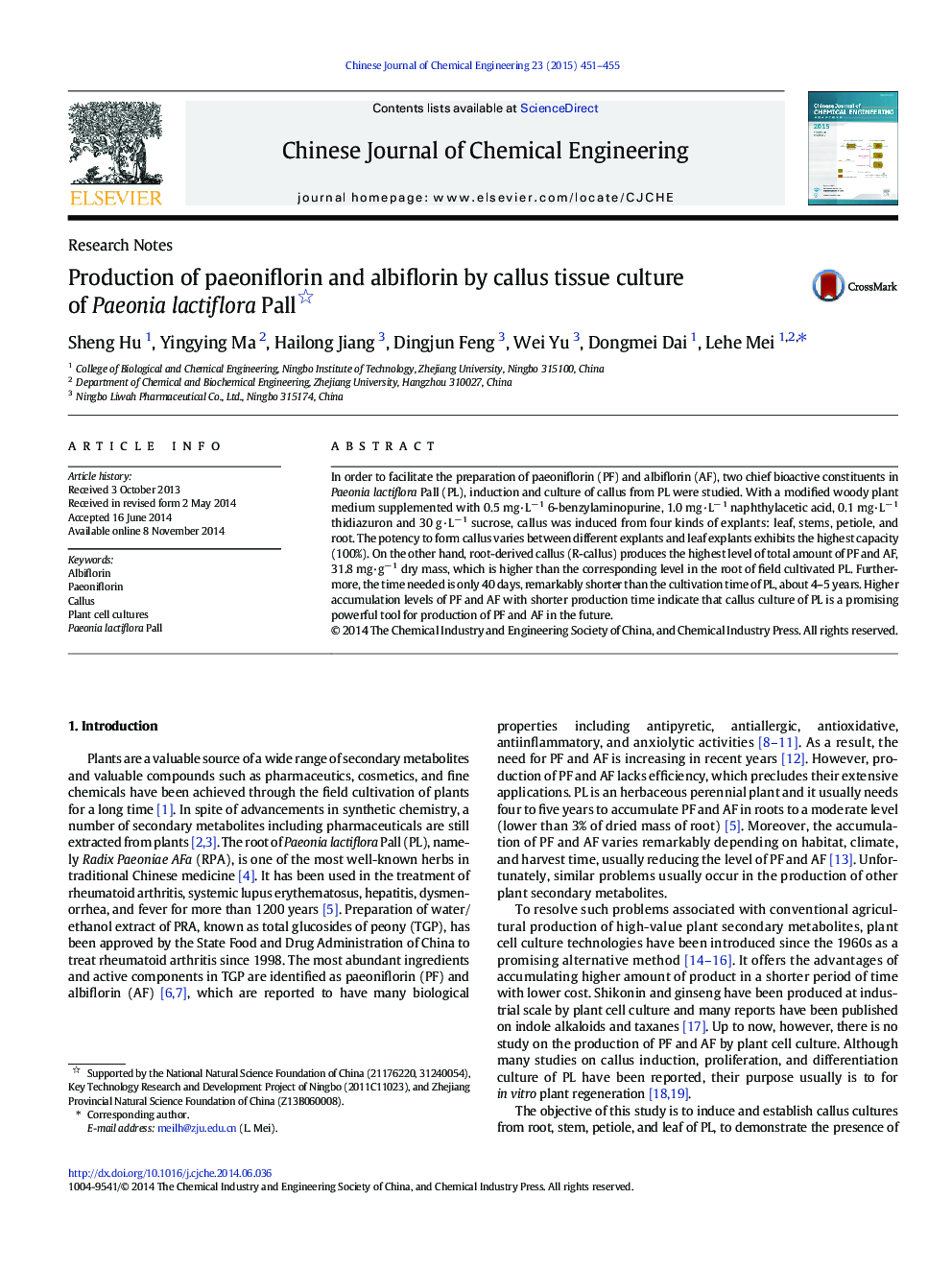| کد مقاله | کد نشریه | سال انتشار | مقاله انگلیسی | نسخه تمام متن |
|---|---|---|---|---|
| 167166 | 1423403 | 2015 | 5 صفحه PDF | دانلود رایگان |

In order to facilitate the preparation of paeoniflorin (PF) and albiflorin (AF), two chief bioactive constituents in Paeonia lactiflora Pall (PL), induction and culture of callus from PL were studied. With a modified woody plant medium supplemented with 0.5 mg·L− 1 6-benzylaminopurine, 1.0 mg·L− 1 naphthylacetic acid, 0.1 mg·L− 1 thidiazuron and 30 g·L− 1 sucrose, callus was induced from four kinds of explants: leaf, stems, petiole, and root. The potency to form callus varies between different explants and leaf explants exhibits the highest capacity (100%). On the other hand, root-derived callus (R-callus) produces the highest level of total amount of PF and AF, 31.8 mg·g− 1 dry mass, which is higher than the corresponding level in the root of field cultivated PL. Furthermore, the time needed is only 40 days, remarkably shorter than the cultivation time of PL, about 4–5 years. Higher accumulation levels of PF and AF with shorter production time indicate that callus culture of PL is a promising powerful tool for production of PF and AF in the future.
In this work, induction and culture of callus from Paeonia lactiflora Pall (PL) were studied to facilitate the preparation of paeoniflorin (PF) and albiflorin (AF), two chief bioactive constituents in PL. Callus was induced from four kinds of explants of PL (leaf, stems, petiole, and root) with a modified woody plant medium (WPM) and the presence of PF and AF in callus was demonstrated by HPLC and HPLC/ESI–MS. Proliferation, productivity, and genetic stability of different explants-derived callus were investigated. The root-derived callus culture produced PF and AF in a much higher level than the root of cultivated PL but the cultivation time was shorten from 4–5 years to about 40 days. The study validates the feasibility of preparation of PF and AF through callus culture of PL and provides a time-and cost-efficient alternative for the production of PF and AF.Figure optionsDownload as PowerPoint slide
Journal: Chinese Journal of Chemical Engineering - Volume 23, Issue 2, February 2015, Pages 451–455